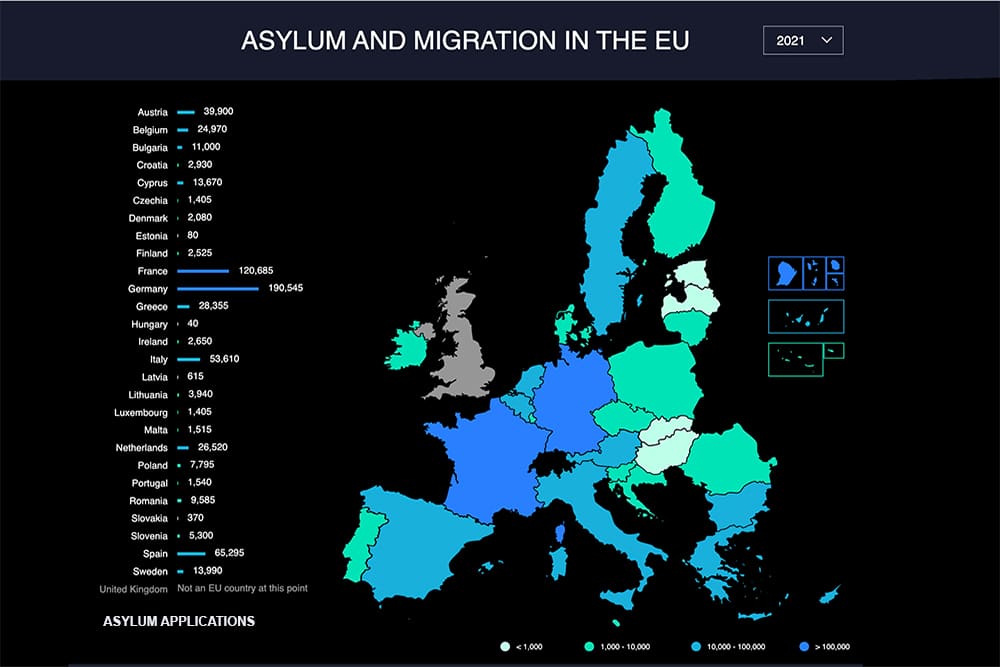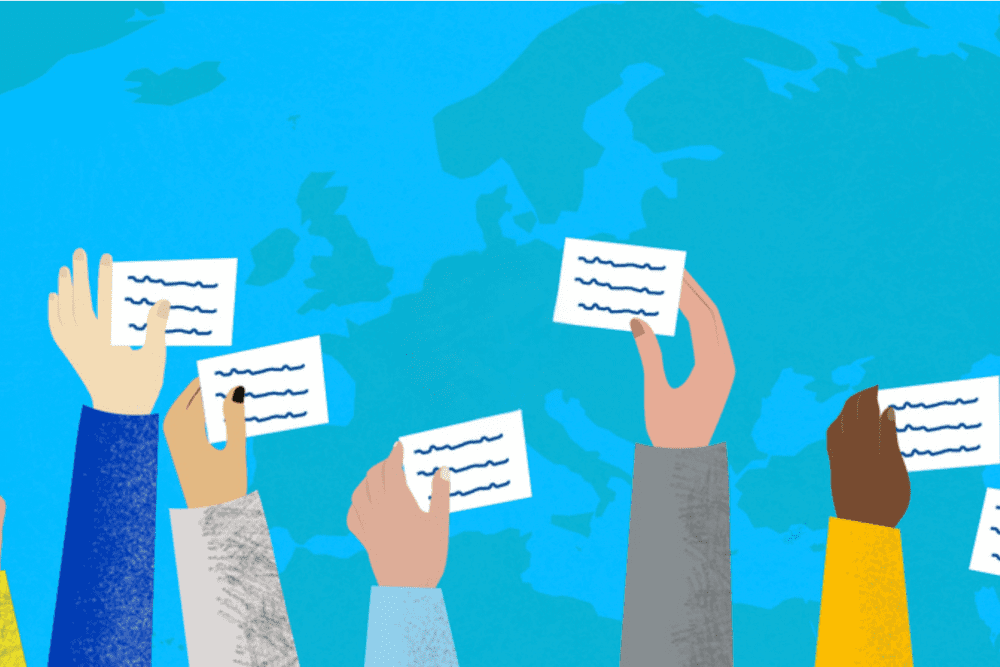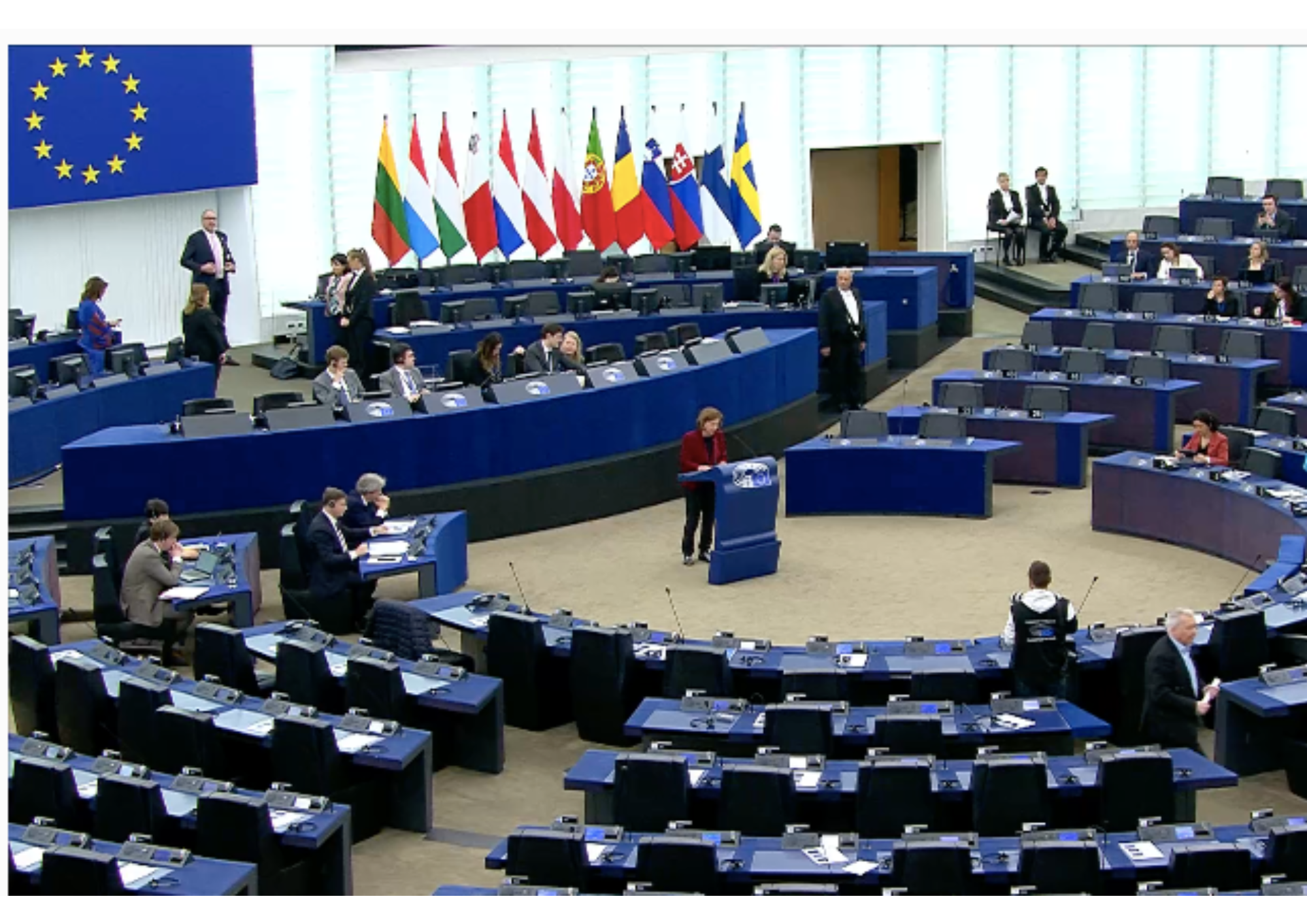Migration in the EU has been affected by crises such as the Covid-19 pandemic and Russian hostilities. Check out the latest figures in our infographic.
Restrictions put in place because of the coronavirus pandemic led to a reduction in migration, but numbers started rising again in 2021. Recent increases are due in part to Russia’s war in Ukraine. Climate change could also have an impact in the future.
The flaws in the EU’s asylum system exposed by the arrival of more than one million asylum seekers and migrants in 2015 remain. In September 2020, the European Comission presented the Asylum and Migration Pact while Parliament has been working on proposals to create a fairer, more effective European asylum policy.
Below you will find all the relevant data about migration in Europe, who migrants are, what the EU is doing to get to grips with the situation, and what financial implications there have been.
Definitions: what is a refugee? What is an asylum seeker?
Asylum seekers are people who make a formal request for asylum in another country because they fear their life is at risk in their home country. Currently people from outside the EU must apply for protection in the first EU country they enter. Filing a claim means that they become asylum applicants or asylum seekers. They receive refugee status or a different form of international protection only once a positive decision has been made by national authorities.
Refugees are people with a well-founded fear of persecution for reasons of race, religion, nationality, politics or membership of a particular social group who have been accepted and recognised as such in their host country. In the EU, the qualification directive sets guidelines for assigning international protection to those who need it. In March 2022, Parliament backed the activation of the Temporary Protection Directive for the first time since it entered into force in 2001 to grant immediate protection to people fleeing the war in Ukraine.
Find out more about the causes of migration
Asylum decisions in the EU
In 2021, there were 632,315 applications for asylum in the EU, 33.8% more than in 2020. This represents a return to pre-pandemic numbers. In 2019, there were 744,810 applications, significantly lower than the more than one million applications registered in 2015 and 2016.
Particularly large increases were seen in Bulgaria (212%), Poland (180%) and Austria (170%) in 2021. Numbers were down in Hungary (65%), Malta (39%), Greece (30%), Spain (26%), Finland (21%) and Sweden (14%).
First-time asylum seekers in 2021 were mainly from Syria (more than 98,800 people or 18% of the total), Afghanistan (83,700 or 16%) and Iraq (about 26,000 or 5%).
The war in Ukraine caused a new influx of migrants into Europe
The Russian invasion of Ukraine resulted in millions of people being forced to flee their homes. There have been 8.8 million border crossings from Ukraine since the start of the war, according to UNHCR, the United Nations’ refugee agency.
In March 2022, 73,850 first-time asylum seekers applied for international protection, up 115% compared to March 2021. The increase is mainly due to the conflict in Ukraine.
Ukrainians were initially received by neighbouring countries, mainly Poland, Romania, Hungary, Slovakia, the Czech Republic and Moldova. According to Frontex, the European Border and Coast Guard Agency, more than 2.5 million Ukrainians returned home between February and June.
In 2015 and 2016, more than 2.3 million illegal crossings were detected. The total number of illegal crossings in 2021 was 200,000, the highest level since 2017. The number of detected crossings increased on all the irregular migration routes from 2020 to 2021, apart from the Eastern Mediterranean one, where numbers dropped to 13,184 from 15,980 in 2020 and 52,169 in 2019.
The Mediterranean crossing remained deadly, with more than 1,500 people reported dead or missing in 2021 compared to 1,754 people in 2020. Irregular arrivals via the Central Mediterranean Route (to Italy and Malta) nearly doubled in January-September 2021 compared to the same period in 2020. There were more than 48,800 such arrivals between January and September in 2021, compared to more than 25,400 in the same period of the previous year.
Overall, the majority of recent arrivals are from Ukraine. Others originate from countries suffering from an economic downturn. A decline in global remittances is also likely to contribute to this trend. Until the economic recovery is under way, poor employment and healthcare prospects will remain an incentive for people to come to the EU.
EU funding for migration
Migration has been an EU priority for years. Several measures have been taken to manage migration flows as well as to improve the asylum system
The EU significantly increased its funding for migration, asylum and integration policies in the wake of the increased inflow of asylum seekers in 2015. € 22.7 billion is reserved for migration and border management in the EU’s budget for 2021-2027, compared with €10 billion for migration and asylum in 2014-2020.
Learn more about how the EU manages migration
Refugees in the world
Around the world, the number of people fleeing persecution, conflict and violence has reached 89.3 million. Children account for about 36.5% of the world’s refugee population.
The countries hosting the largest number of refugees are Turkey, Colombia, Pakistan, Uganda and Germany. Only 17% of the world’s refugees are hosted by developed countries.












